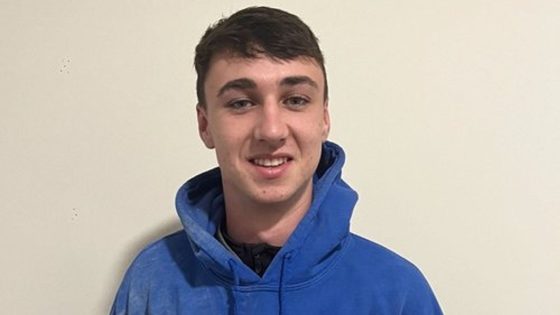“There is no white saviour in the film. The strength comes from within,” director Sydney Freeland said of her feature film Rez Ball after its world premier at the Toronto International Film Festival this week. Of all the films at the festival, this is the one I wanted to watch the most.
TIFF doesn’t traditionally have a long list of sports-related movies, but I heard the buzz about Rez Ball, co-written by Freeland with Sterlin Harjo (creator of Reservation Dogs). Rez Ball is a Netflix production and boasts LeBron James as one of the producers.
This story takes place on a Native Indian Reserve in Diné (Navajo) country in New Mexico. It follows a boys’ basketball team at Chuska high school. While the story is fictional, it gives us a look into the real culture of sports within Native American and Indigenous communities. There aren’t professional Indigenous teams in those regions so high school sports become robust places of growth and development.
The main actors, all Native American and/or Indigenous, are compelling and love this movie. In fact, at the Q&A afterward, it was easy to see that although they may be from different nations and communities across the U.S. and Canada, they were deeply connected because of the tradition of storytelling and because their identities were respected and amplified.
Some might find it hard to believe that in the year 2024 we still don’t see a lot of feature films by Indigenous creatives. I’m not talking about films made about Indigenous experiences; I mean with Indigenous directors whose lens into these stories is unmatched.
Dallas Soonias is a Cree and Ojibwe volleyball player who also happens to be a brilliant film director. He recently called the play-by-play for volleyball during the Paris Olympics. Soonias is from the Chippewas of Nawash Unceded First Nation in Ontario. Storytelling is in his blood and something he does so beautifully. I asked him why it’s important to have Indigenous voices in sport in particular.
“Representation matters,” he told me via text. “Kids need to know it’s possible to find success at the highest level in sport, they need to be shown examples of it. Having a voice in the media can speak to the specific needs and challenges Indigenous people face in this country.”
Native American and Indigenous athletes and communities have suffered from systemic racism and barriers, and it continues. That’s why having people from those communities report on sport and tell powerful stories is essential for upcoming generations to see.
Sports are deeply intertwined in many cultures. The depth of contribution to sport from Indigenous communities is profound. While Rez Ball tackles serious issues against an authentic backdrop, the tension in the film is intense. It’s a deep dive into grief, dysfunctional family and community loss. But the resolutions and the navigating of those issues come from elders within the culture.
That’s one of the biggest takeaways from this film and beyond that — the strength and history of resilience of Indigenous communities.
One of the most powerful learnings I had while covering the Paris Olympics was listening to Soonias speak with other Indigenous play-by-play commentators and presenters. They spoke about the history of Indigenous Olympic athletes, their inspirations and how they carry their identities in their work, and how they create change in their communities and use sport as a vehicle to uplift and preserve Indigenous languages.
I think about their conversation a lot. I teared up a few times at the joy and sharing of the piece. It also relates to other communities who don’t often feel included in the sports space. The impact of storytellers sharing their own stories is so powerful.
Vanna Blacksmith is an Indigenous reporter with CBC North who covered the Paris Olympics for CBC Sports. Blacksmith is two-spirit and Eenou-Anishinaabe Bear Clan from the Cree Nation of Mistissini with Ojibwe roots from Wiikwemikoong Unceded Territory.
Prior to flying to Paris, Blacksmith told me she had never travelled broad before and this experience gave her her first stamp in her passport. She grew up playing basketball and competed in the North American Indigenous Games (NAIG) in basketball in 2014. She currently lives in Montreal.
Blacksmith spoke with a number of Indigenous athletes, but one of her interviews in particular got my attention. She interviewed Indigenous Olympian Apollo Hess. She knew that Hess, the first Blood Tribe Olympic swimmer and a member of the Kainai Nation in Alberta, was named ‘Mo’tóyáóhkii’, which translates to Ocean Boy, by his grandfather. She knew his home was an inland community.

Knowing and learning about your subjects is a basic tenet in journalism. But it hasn’t always been done well for people in the margins. Which is why Blacksmith’s presence is essential.
I asked her what it felt like at that moment to speak with Hess.
“That vibe, we were both kind of nervous,” she recalled over the phone. “Sometimes [Indigenous people] carry shyness in the spotlight. But it’s like we were two rez kids living out a wild dream. We’re away from our land and people for this really big thing. But there’s a sense of togetherness that makes things a little more easygoing.”
The interaction is important because the ease with which they talk is so plain to see. Her ability to find poignant stories, underline them and offer them to wider Canadian society is so powerful.
“It’s rare to see Indigenous people at higher sport levels,” Blacksmith said. “Communities see themselves in the athletes.”
Blacksmith thinks that in addition to Olympians, grassroots accomplishments are important to chronicle.
“It all starts from where they’re from,” she explains. “The earliest stages are important.”
I’m grateful to these creatives, storytellers and journalists for doing the work that needs to be done, and teaching us along the way. Sport is emboldened because of them.
Source Agencies



